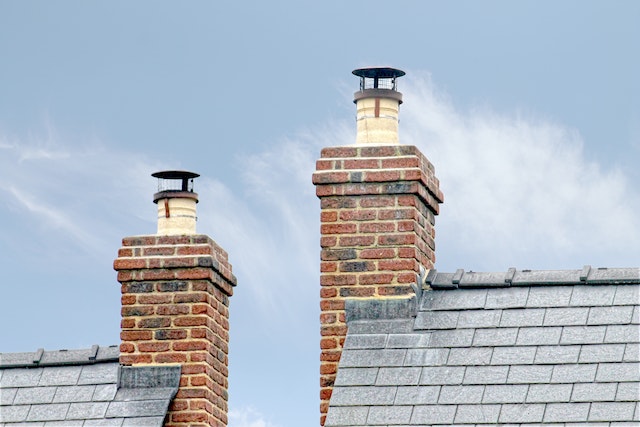
Roof flashing is an essential component of your home’s construction. Flashing is typically used at junctions and seams in the roofing material. Without flashing, water can easily trickle through the smallest gaps and make its way into your home. Flashing adds an extra layer of protection, keeping water away from vulnerable parts of the roof.
Why Is the Color of Roof Flashing Important?
Roof flashing is highly functional. Without it, your roof wouldn’t be as waterproof as it is. However, it can also be fashionable. In some spots, the flashing is covered by other roofing materials. But this is not always the case. If you don’t take the color of the flashing into consideration, it could stand out like a sore thumb.
Older houses don’t usually have as much flashing as newer homes. That’s because they were constructed differently. Many older houses had extra molding to shield the roofing materials from water. Today, there are dedicated flashing materials and styles for every part of the roof. Therefore, flashing is much more prevalent in modern homes. But depending on its location, flashing can be quite conspicuous.
Obtrusive flashing detracts from the visual appeal of your architecture. It may look out of place or low quality if its color doesn’t suit your building’s appearance.
What Colors Are Available for Roof Flashing?
Because roof flashing is made of metal, you might assume that it only comes in shades of shiny silver, gray or copper. However, flashing is available in a wide variety of hues. Many manufacturers make black flashing, which becomes well disguised against a dark roof. Other popular colors for roof flashing include matte gray, brown, cream and white. Different types of flashing may require distinct colors.
Drip Edge Flashing Colors
Drip edge flashing covers the edges of your roof. It is installed beneath the shingles and over the fascia, protecting the vulnerable wood from water damage. Although much of the drip edge flashing will be covered by the roofing material and gutters, some of it will be visible.
If the color contrasts dramatically with the shade of your roof, trim or gutters, it will be eye-catching, and not in a good way. The wrong drip edge color can throw off the architectural balance of a home, making the roof look too heavy or disconnected. Plus, it makes the paint job look unprofessional or unfinished.
The most common drip edge flashing colors are white and black. Although black and other dark tones can work with a dark roof and any trim color, white flashing looks best with white trim.
Chimney Flashing Colors
This type of flashing protects the edge of the roof where it meets the vertical wall of the chimney. Although the flashing must overlap the roofing material to be most effective, it may in turn be covered by a row of shingles to camouflage it. However, the portion of the flashing that lies against the headwall will be visible.
Silver, brown and black are popular colors for chimney flashing. Maintaining a silver finish is likely the most affordable option. But bare flashing can create a glare and look too bright. Many homeowners opt for natural brown or black flashing in this area.
Colors for Porch Roof Flashing
A porch roof needs flashing where the slope meets the house’s vertical wall. Standard factory finishes might not be ideal. In this case, painting the flashing to match the exterior wall will help it blend in.
Can You Paint Roof Flashing?
As we mentioned above, you’ll probably want to paint porch roof flashing. You can paint any type of flashing to customize it with the colors of your choice. However, special considerations must be made when preparing the surface and choosing a paint product. Using the wrong technique or product can lead to peeling, blistering and bubbling paint.
The best type of paint for roof flashing is UV-resistant roofing spray paint. If you want to match the flashing to the house, use the exterior paint. You’ll need to sand and prime the flashing before applying the color. Follow the paint manufacturer’s directions to cure it properly.
A professional paint job will likely last longer than a DIY application. If you’re having your home professionally painted, you’ll need to instruct the painters to apply color to the flashing. Otherwise, they’ll leave it untouched.
Choosing a Roof Flashing Color
Before you decide to paint your flashing, explore your options for factory-finished color. Some manufacturers offer several hues to complement standard roof and home finishes. Although this option may cost more than painting the flashing yourself, it saves you time. Also, it produces the most long-lasting and reliable results.
If you’re not sure what color flashing to use, consult with your roofer. We will indicate where the flashing will be visible and offer our best recommendations.
